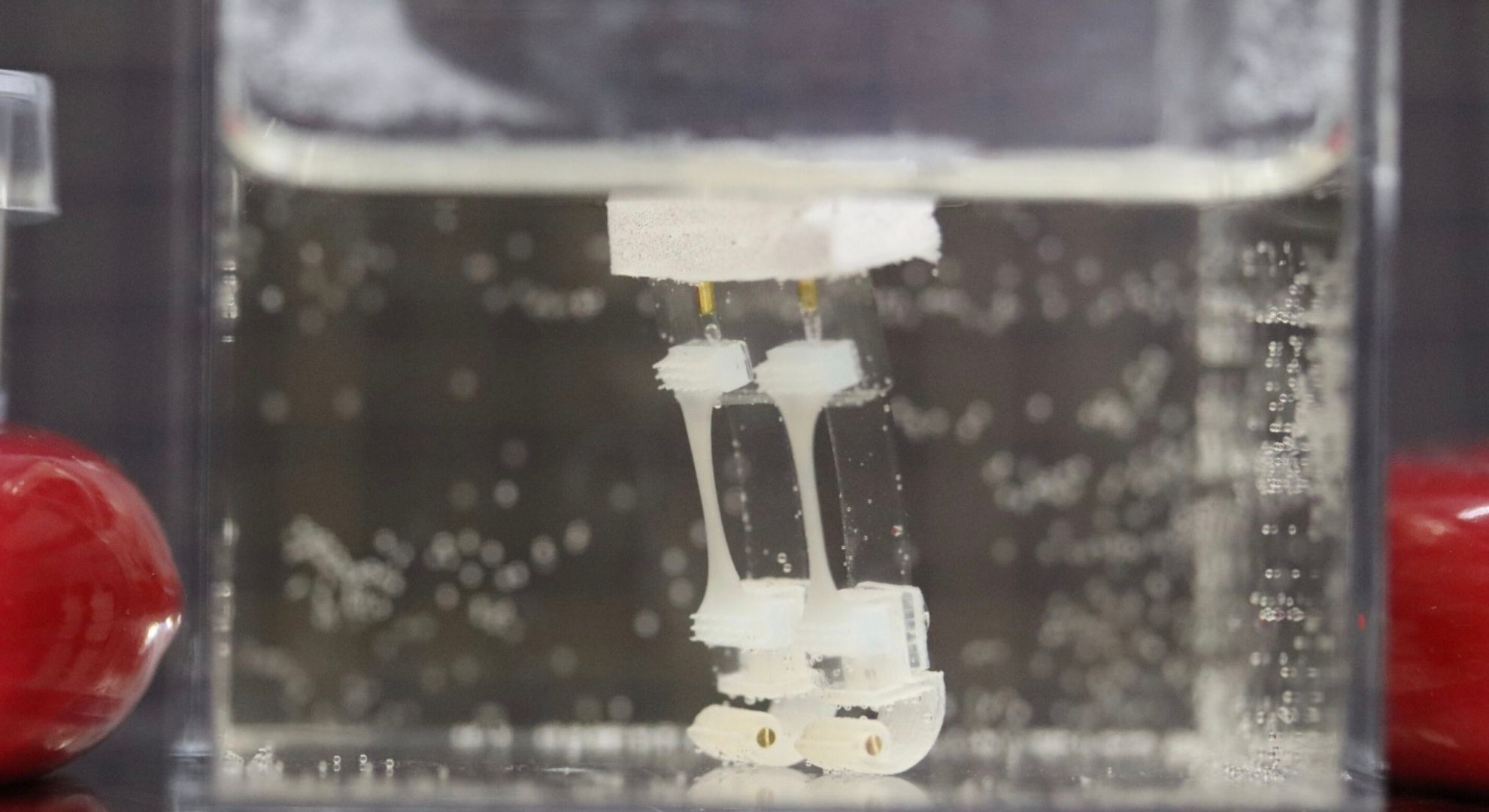Human bodies are flexible compared to robots. They can move precisely and effectively transform energy into movement. Thus, taking inspiration from how humans walk, Japanese researchers designed a two-legged biohybrid robot by fusing artificial materials with muscle tissue, allowing the robot to walk and even pivot.
A contributing author from the University of Tokyo in Japan named Shoji Takeuchi claims that research on biohybrid robots—a combination of mechanics and biology—is drawing interest as a new area of robotics with biological function. They are able to create a small robot with smooth, subtle motions by utilizing muscles as actuators.
The two-legged robot created by the research team is an inventive bipedal design that expands on the heritage of biohybrid robots that replicate human locomotion and function in water by employing muscles.
The robot’s skeleton is primarily made of silicone rubber (with lab-grown muscle tissues attached to each silicone leg) that can bend and flex to adhere to muscle movements, while it has a foam buoy and weighted legs to help it stand straight. These features enable the robot to crawl, swim straight ahead, and make turns, but not sharp ones. However, the ability to turn swiftly and pivot is essential for robots to avoid obstacles.
To test the robot’s features, the researchers shocked the muscle tissue with electricity, resulting in it contracting, lifting the leg, and then falling forward when the energy died down. The biohybrid robot is said to successfully walk at a speed of 5.4 mm/min (0.002 mph) by switching the electric stimulation between its left and right legs every 5 seconds. In 62 seconds, the robot turned 90 degrees to the left. The results demonstrated that the muscle-driven bipedal robot is capable of walking, stopping, and performing precise turns.
Takeuchi said that they are currently manually moving a pair of electrodes to impart an individual electric field to each of the legs, a move that they believe will more effectively boost the robot’s speed. To allow for more complex and potent motions, the team also intends to equip the bipedal robot with joints and larger muscle tissues. He also notes that to maintain the live tissues and device structures that enable the robot to function in the air, the team will need to incorporate a food supply system before adding more biological components to the robot.
Even in the days before advanced technology, robots were everywhere. Yet, as time passes by, human inventions are becoming more sophisticated.
Other POP! stories that you might like:
You’re not imagining it: January always feels like it runs forever. Here’s why
‘Sensitivity’ can be both a blessing and a curse
11-year-old deaf boy hears for the first time after undergoing gene treatment
99% of cancer cells destroyed using vibrating molecules in lab experiment
Hollywood degeneration? Or are we just not accepting of artists’ change in creative direction?



